Special Drought Report
- Gibbs Dube
Millions of Zimbabweans Seeking Food Aid As Severe Drought Worsens
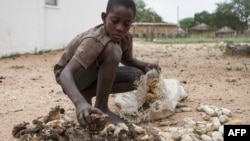
The drought situation is worsening in Zimbabwe where at least 7,7 million people need urgent food aid as some parts of the southern African nation have so far received insignificant rains for large-scale and subsistence farming.
The World Food Program (WFP) says the climate change-induced dry spell is affecting people in urban and rural areas with indications that more people are set to seek drought relief aid this year.
More than 34,000 cattle have succumbed to the drought, which has resulted in poor harvests in four of the last five crop seasons.
The Zimbabwean government, according to Agriculture Minister,Perrence Shiri, is left with 100,000 tonnes of maize in its strategic grain reserves. The country consumes about 80,000 tonnes of maize per month. WFP deputy country director Neils Balzer says Zimbabwe is facing one of the worst food crises in years.
“As the World Food Program we are very worried about the situation on the ground. There is a number of compounding factors that have been coming together over the past, I would even say years. First of all out of the last five years Zimbabwe has seen four droughts, so, that’s being climate change-induced changes, less rain, erratic rain, late start of the season, etc, that has affected four out of five previous harvests. The most recent one 2018/2019 harvest was also affected and the country has only produced half of the cereals that it needs to sustain itself.”
Balzer says some Zimbabweans can hardly have a decent meal a day due to the severe drought and current harsh economic situation in Zimbabwe.
“… An assessment that was done in 2019 has revealed that about 7.7 million or just under eight million people are in need of food assistance during the peak of the lean season. The peak of the lean season is what we call from January to March/April just before the next harvest comes in, that’s when hunger is at its peak and most people have run out of their own food stocks. So, these compounding factors have driven up the numbers.
“From a WFP perspective we are looking at providing assistance to just over four million people. We arrived at that number by providing an analysis, additional analysis of the joint government and development partners analysis …”
Matabeleland regional Agricultural Extension Services officer, Dumisani Nyoni, says climate change is causing ravaging droughts in Zimbabwe and other nations.
“ What we are observing is that we have increased variations in the amount of rainfall that we get from year to year. There is an increase in the frequency of mid-season dry spells either in the month of January or February. So, (there is a) short season and then rains start in November, December but tail off in February when we are yet to mature our crops.
“We are also facing an increase of incidents of false start to the seasons, that we get some rains in November or December and then there is an abrupt stop which affects the growing of crops in the fields. So, this phenomenon is going to be with us for a long time. I’ts real, it’s with us for many years to come and we need to change our midset and the way we do business.”
Disaster management expert Everson Ndlovu of Zimbabwe’s National University of Science and Technology, concurs, noting that climate change is affecting millions of farmers in Zimbabwe and other nations.
“The impact of climate change mainly is the shortage of water to do cropping. Remember we have been having droughts for the past three or so seasons and already the crop is at wilting stage in many areas. People have a meal a day, you can’t afford three because one meal is very expensive and is not easily available, that’s quite major. For the majority of the people in the south western part of the country they are dependent on remittances from their children, friends and relatives in South Africa. For the ones that are here (city), they are waiting anxiously for the World Food Program to kick start, people are starving, that’s a given fact. So, food shortage is our major challenge in the country.”
The WFP says deepening hardships are forcing families to eat less, skip meals, take children out of school, sell off livestock and fall into a vicious cycle of debt. It says there is little respite expected for the most vulnerable, including subsistence farmers who grow most of Zimbabwe’s food and depend on a single, increasingly erratic rainy season.
Sarah Mangena, an 89 year-old living in rural Matabeleland who witnessed one of the most severe droughts in 1947, says the current dry spell has also reached alarming proportions.
“(In 1947) People were picking and eating wild water melons in the bush and eating them as there was no food. Our parents used to cook that for us due to mealie-meal shortages. Those people who could afford (to purchase food) used to buy a five kilogram bag of yellow mealie-meal for 10 cents. There was a lot of hunger, people were eating sweetened cattle fodder. Our parents used to collect it from white commercial farms and we would eat it at home.
“Hunger this year is almost the same as in 1947. The only difference is that there are some people who are currently getting food from donor agencies and the government. We drink water the whole day and only eat in the evening. We eat once like dogs.”
About 20 severe droughts have hit Zimbabwe in the last 50 years, says crop and livestock specialist, Joseph Sikosana, former head of the country’s Matopos Research Station. The latest dry spells have affected millions of people in rural and urban areas. Figures released by the Department of Social Welfare indicate that over 25,237 households in Bulawayo and Harare are currently in need of food aid. They need at least 1,261.85 metric tonnes of maize per month. Clifford Matorera, Social Welfare director, says more people in urban areas are facing hunger.
“We have started identifying people in every community. We have started with Harare and Bulawayo and in our budget of 2020 we are trying to scale up, that is to look into other urban areas so that at least we identify the more vulnerable people in the urban communities so that they are also catered under the program.”
The government, which is facing financial constraints says it is helping some vulnerable communities in urban and rural areas. Acting Social Welfare Minister Sekai Nzenza, says state food aid is also being distributed to some vulnerable households in urban areas.
“In Epworth where they started registering the vulnerable households as of two months ago, there was a lot of (food) distribution happening there.”
WFP’s Balzer says millions of people in urban areas are food insecure due to the deteriorating economic situation in Zimbabwe.
“I think one important aspect which we should not underestimate is that over the past years and it’s a comparatively new phenomenon that we find food insecurity increasing in urban areas as well. Traditionally, it’s more of an issue in rural areas but out of the 7.7 million people … about 2.2 (million) are located in urban areas and not Harare but many peri-urban areas in Zimbabwe.”
He says there are many challenges in securing food for its targeted four million vulnerable people as the drought has also affected some African countries.
Balzer stresses that they need urgent financial assistance.
“We came out with an appeal from a WFP perspective to reach those four, just over four million people. For that to happen we need $200 million United States dollars for the next six months and we need that funding urgently.
“The reason for this is also that in the past we would procure commodities, we would buy commodities in the region but knowing that the drought has not only affected Zimbabwe but South Africa, Zambia, Mozambique, essentially the entire region, so, the stocks are comparably low in the region that means we have to go out further afar to places – Mexico and other places where we need to source these commodities, now, that obviously comes with quite a bit of a lead time so it takes us up to three months from funding confirmed to actually putting food on the table of those who need it most.”
The severe drought has also killed livestock, including cattle and donkeys in some regions. Figures released by the Department of Agricultural Extension Services indicate that the worst hit regions are Matabeleland North, Msvingo and Matabeleland South.
About 13,000 cattle have so far succumbed to drought in Masvingo, 16,000 in Matabeleland South and almost 7,000 in Matabeleland North. Nyoni says farmers are devastated by such loses.
“We lost close to 7,000 herd of cattle mostly in the districts of Binga, Nkayi, to a lesser extent Bubi, Umguza, Tsholotsho and Lupane. Basically this was due to shortages of water and limited grazing availability due to the drought situation that we faced this past season. It also took longer than we expected in terms of getting effective rains to start this current season. So, there was a bit of overlap in terms of livestock loses going into the beginning of the year.”
Nyoni noted that the situation is improving in some areas. “…We have been receiving some rains and the situation has significantly improved especially in the area of availability of surface water for livestock watering and to some extent a bit of grass. The livestock situation is improving, especially among the young stock. In fact, the older cows and those in lactation are the ones that are still lagging behind in terms of (health) condition.”
With so many people seriously affected by perennial droughts, some experts have suggested some drought-mitigating factors like the building of dams to harness water for irrigation purposes while others believe that sound agricultural practices will minimize the crippling effects of dry spells in Zimbabwe, the Southern African Development Community and other nations.
Ndlovu says there is need to craft a policy to enhance the cultivation of drought-tolerant crops like sorghum, millet, rapoko and legumes in certain regions.
“… (There is need for) Heavy investment in irrigation. That’s the only way out. That’s one. Development of water sources, and again we need to emphasize the planting of drought resistant crops, our small grains, the very grains that our forefathers used. I think our forefathers were well-informed and I think we should go back and retrace and grow those crops that are suitable for our environment and even the recent rains that we just received people should not give up. People should plant even the early maturing crops … I encourage farmers to plant early maturing crops including beans.
He says farmers, who fail to plant such crops, if the government passes a law designating that some areas are set aside for drought-tolerant crops, should face the wrath of the law.
“I think we need to work on a policy, a policy that would say per particular district, areas that are known to be drought prone, it is a must to plant such crops. If you don’t then you get arrested. May be that way will add some kind of the awareness that people are talking about.
“We need to continue to drive the awareness message to please our farmers, to promote this, even on the part of the government you know many of these programs have been promoted by the NGOs and civil society, I think the government must come in and promote these small grains. I don’t want to call them the small grains, that’s our food anyway. It was our food long back.”
Nyoni says there is need to come up with a solution that tackle climate change, including the growing of drought-tolerant plants and good livestock management.
“What then is required is that as farmers, as communities and as citizens we take note of that because it (climate change) affects availability of water, it affects our ability to produce food and sustain ourselves at household level, it affects livestock production, it affects wildlife and tourism in the country in the sense that once you have animals dying no tourists will visit areas of interest.
“So, we need to take note and begin to take strategies that are climate smart in terms of our agricultural production, in terms of our support to the livestock industry and also in terms of developing water resources as a nation so that we support irrigation development and also to make sure that we also have adequate water supplies to the urban population.”
Balzer agrees, adding that there is need to also invest in vulnerable communities so that they can be self-sufficient.
“…This is not going away with the next harvest whether good or bad but this is something that we are in for the long run thoughout 2020, I believe and hence it’s also important that we continue to invest not just in the humanitarian assistance which is urgently needed right now, focus needs to be on that, but to continue our investments at commensurate scale in rural areas, in urban areas in building the resilience of those communities that are most vulnerable and that means that we need to ensure that people have the capacity, communities have the capacity to absorb future shocks maybe of climatic nature or other natures.
“For example, WFP over the years we have invested in various locations all over the country … We work with communities, we build small dams, we look at water share management, we link those dams with nutritious gardens, the gardens are feeding the people of that community but also the surplus is sold to nearby markets, part of the produce is given to schools complementing the government supplementary programs. So these investments are fundamental.”
Millions of people may join those already getting free food handouts as Zimbabwe grapples with a severe drought, depreciating economy and climate change.
See all News Updates of the Day
UN Releases $100 Million for Humanitarian Emergencies in 10 Countries Around the World
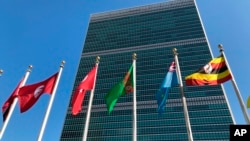
UNITED NATIONS (AP) — The United Nations released $100 million on Friday for humanitarian emergencies in 10 countries in Africa, the Middle East, Asia and the Caribbean.
Acting U.N. humanitarian chief Joyce Msuya said a lack of funding in these countries is preventing aid agencies from providing life-saving assistance, “and that is heart-wrenching.”
More than one-third of the new funding from the Central Emergency Response Fund known as CERF will go to Yemen, where a civil war is now in its 10th year, and Ethiopia, where government forces are fighting several rebel groups in its regions as well as ethnic-related insurgencies. Yemen is getting $20 million and Ethiopia $15 million.
Humanitarian operations in countries engulfed in years of conflict and displacement, exacerbated by climate shocks will also be getting funds: Myanmar ($12 million), Mali ($11 million), Burkina Faso ($10 million), Haiti ($9 million), Cameroon ($7 million) and Mozambique ($7 million).
So will two countries suffering severe food insecurity from an El Niño-induced drought and flooding, Burundi ($5 million) and Malawi ($4 million).
This was CERF’s second release of $100 million in emergency funding for humanitarian emergencies this year. In February, that money went to Chad, Congo, Honduras, Lebanon, Niger, Sudan and Syria.
But the U.N. Office for the Coordination of Humanitarian Affairs, known as OCHA, which manages CERF, said the $200 million released this year is the lowest amount in the last three years, “underscoring the growing gap between humanitarian needs and the donor funding CERF receives to meet them.”
This year, the humanitarian community appealed for $49 billion to reach 187 million people in crises worldwide but has received just 29%, leaving a $35 billion gap, OCHA said.
In addition to releasing funds to the 10 countries on Friday, the U.N. and its partners have launched emergency appeals to reach 14.5 million people in southern Africa affected by El Niño: Zambia, Zimbabwe, Mozambique and Malawi.
Nearly 68 Million Suffer from Drought in Southern Africa, SADC Says
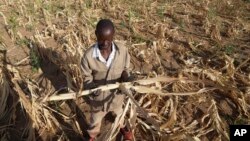
HARARE, Zimbabwe (Reuters) — About 68 million people in Southern Africa are suffering the effects of an El Nino-induced drought that has wiped out crops across the region, the regional bloc SADC said Saturday.
The drought, which started in early 2024, has hit crop and livestock production, causing food shortages and damaging the wider economies.
Heads of state from the 16-nation Southern African Development Community (SADC) were meeting in Zimbabwe's capital Harare to discuss regional issues including food security.
Some 68 million people, or 17% of the region's population, need aid, said Elias Magosi, SADC executive secretary.
"The 2024 rainy season has been a challenging one with most parts of the region experiencing negative effects of the El Nino phenomenon characterized by the late onset of rains," he said.
It is Southern Africa's worst drought in years, owing to a combination of naturally occurring El Nino — when an abnormal warming of the waters in the eastern Pacific changes world weather patterns — and higher average temperatures produced by greenhouse gas emissions.
Countries including Zimbabwe, Zambia, and Malawi have already declared the hunger crisis a state of disaster, while Lesotho and Namibia have called for humanitarian support.
The region launched an appeal in May for $5.5 billion in humanitarian assistance to support the drought response, but donations have not been forthcoming, said outgoing SADC chair Joao Lourenco, the president of Angola.
"The amount mobilized so far is unfortunately below the estimated amounts and I would like to reiterate this appeal to regional and international partners to redouble their efforts... to help our people who have been affected by El Nino," he told the summit.
The drought is a major talking point at this year's summit, alongside issues such as the ongoing conflict in eastern Democratic Republic of Congo, which Lourenco said was a source of great concern.
Argentina Beats Brazil 1-0 to Win Copa America, 1st Major Title in 28 Years

Argentina won their first major title in 28 years on Saturday and Lionel Messi finally won his first medal in a blue-and-white shirt when an Angel Di Maria goal gave them a 1-0 win over Brazil and a record-equaling 15th Copa America.
Di Maria, starting for just the second time in the Copa, justified his selection by scoring the opener midway through the first half.
Renan Lodi failed to cut out a long ball forward from Rodrigo De Paul and Di Maria lobbed the stranded Ederson with aplomb.
Brazil piled on the pressure in an exciting second half but even with five strikers on the field they could not get an equalizer against an Argentine defense protected by the outstanding Rodrigo De Paul.
"First, we have to congratulate our opponents especially for the first half when they neutralized us,” Brazilian defender Thiago Silva said.
“In the second half, there was no contest -- only one team tried to play football, the other just wasted time as we knew they would. It’s not an excuse, we didn’t do what we had to, principally in the first half.”
Argentina’s win was a particular triumph for Barcelona striker Messi, who picked up his first-ever title in a blue-and-white shirt after more than a decade of club and individual honors.
The Argentine players surrounded their captain at the final whistle. Goalkeeper Emilian Martinez celebrated what he called a Maracanazo, a remarkable win at the famous Rio stadium.
"I'm speechless," he said. "I knew my dream would come true, and where better than the Maracanazo and giving the title to the best in the world and fulfilling his dream."
Messi finished the tournament’s joint top goal scorer with four goals and was elected joint best player along with Neymar.
But he was quiet throughout the game at the Maracana stadium and uncharacteristically missed a golden opportunity to wrap the game up with 2 minutes remaining.
When the final whistle went, Argentina TV declared “Argentina Champions, Lionel Messi Champion!”
The match itself was a disappointing one, with Argentina the better side in a cagey first half that featured 21 fouls.
However, Brazil came out more aggressively in the second period and as the time ticked on, they threw more people forward -- and at one point having five recognized strikers on the field.
Richarlison had a goal chalked off for offside 7 minutes into the second half and then forced Emiliano Martinez into a good stop 2 minutes later.
But as Brazil poured forward gaps opened up and Argentina missed two clear chances to score in the dying moments of the match.
The victory was Argentina’s 15th Copa America triumph and means they draw level with Uruguay as the all-time leading winners.
"This is a very big title," Argentine coach Lionel Scaloni said. "I hope that Argentines can enjoy it. The fans love the team unconditionally and I think they identify with this side that never drops its guard."
Their win extended their sequence of undefeated matches to 20 under Scaloni and handed Brazil their first competitive defeat since they lost to Belgium in the quarterfinals of the 2018 World Cup.
Food Deliveries ...
The World Food Program has sourced food supplies for some people in Matabeleland region facing a devastating drought. Thousands of people are now having one meal a day in some parts of the country. The drought has decimated more than 34,000 livestock. (Video: Albert Ncube)
Harare Resident Surviving Amidst Zimbabwe Economic Crisis
A Harare resident says people should find some means of making a living amid a serious economic crisis in the country, once regarded as southern Africa's breadbasket. (Video: Mlondolozi Ndlovu)
Farai: We Are All Hustling in Zimbabwe
A Harare resident, who identified himself only as Farai, tells VOA Zimbabwe correspondent Mlondolozi Ndlovu that most local people are struggling to make a living due to the current harsh economic situation in the country. (Video: Mlondolozi Ndlovu)
Cheap as Bread, Girls Sell Sex to Survive Crisis in Africa

LONDON (Thomson Reuters Foundation) - Young girls in southern Africa are selling sex - sometimes for less than the cost of bread - to survive a hunger crisis ensnaring tens of millions, aid agencies said on Thursday.
In Angola, girls of 12 sell themselves for as little as 40 cents to feed their families as the south of the country faces its worst drought in four decades, World Vision said.
The United Nations says a record 45 million people in southern Africa face hunger amid a “silent catastrophe” caused by repeated drought, widespread flooding and economic chaos.
World Vision said staff had seen a significant increase in girls resorting to transactional sex in Angola and Zimbabwe amid “huge levels of desperation”.
Robert Bulten, World Vision’s emergencies director in Angola, told the Thomson Reuters Foundation a girl might get 500 kwanzas ($1) for sex - enough to buy about a kilo of beans or two kilos of maize - but could get as little as 200 kwanzas.
“We definitely know there’s an increase. It’s difficult to quantify because it’s taboo ... but I would say a significant number (are doing this),” he said.
“We’re talking about girls between 12 and 17.”
Bulten said the price of some staples had doubled since last year. With the next harvest not due until June, he predicted hunger would worsen.
In Zimbabwe, CARE International said there were reports of girls as young as 14 resorting to selling sex, especially en route to South Africa and near goldmines.
“Sometimes they earn as little as 5 RGT ($0.31) for one sexual encounter, which is really awful ... it’s not even enough to buy a loaf,” said CARE’s regional gender expert Everjoy Mahuku.
ActionAid regional advisor Chikondi Chabvuta said women and girls “on the edge of survival” were forced into transactional sex in Mozambique and Malawi.
Swathes of southern Africa have experienced their lowest rainfall since 1981, according to the United Nations, which says the crisis is fuelled by climate change as temperatures in the region rise at about twice the global rate.
Other countries affected include Zambia, Madagascar, Namibia, Lesotho and Eswatini.
Aid workers said many of the girls would normally be in school. In some cases, they had dropped out because of deepening family poverty, but many schools had also closed.
World Vision’s Bulten said the crisis in southern Angola had also increased the incidence of rape and child marriage.
Girls were at heightened risk of rape while walking long distances for water or foraging in forests, he said.
Families struggling to make ends meet may marry girls off early so they have one less mouth to feed, but Bulten said sometimes it was to keep them out of the prostitution.
The International Federation of Red Cross and Red Crescent Societies said the crisis had driven up child marriage in Zimbabwe, Zambia, Lesotho and Namibia.
Reporting by Emma Batha @emmabatha; Editing by Lyndsay Griffiths.
Storm-hit Zimbabweans Endure Another Rainy Season in Risky Homes
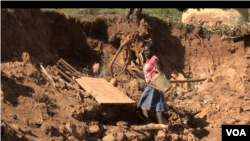
Farai Shawn Matiashe, Thomson Reuters Foundation
CHIMANIMANI, Zimbabwe, Jan 29 (Thomson Reuters Foundation) - Albert Sabawe, 25, is waiting to eat lunch, resting against the wall of his flimsy wooden home in a small village in eastern Zimbabwe’s Chimanimani district.
The father of one moved into this shack by the river when he got married in 2018, after his parents bought the land from local authorities in 2010.
Jobless Sabawe could not afford to build a house of brick and cement, as is common in Zimbabwe.
But when powerful Cyclone Idai hit last March, ripping off part of the roof, luck spared his family.
The storm killed more than 300 people, displaced about 60,000 and destroyed 50,000 homes in the southern African nation.
It caused damage worth $622 million, mainly in Chimanimani and Chipinge districts, according to the government.
Sabawe’s home survived, but located less than 10 metres (33 ft) from the Nyamatanda River, whose channel was widened by the 2019 storm, it remains vulnerable to flooding this rainy season.
“We are living so close to the river. I would not want another cyclone to strike again while I am still here,” Sabawe said.
If offered the chance to relocate under a planned government programme, he would be willing to do so as long as the area had enough farmland to sustain his family, he said.
Chimanimani has so far received average rainfall this rainy season, which runs through April.
But the Meteorological Services Department (MSD) has predicted heavy rains nationwide in the coming weeks, and other places have already experienced flash floods, damaging homes and crops.
According to Zimbabwe’s Civil Protection Unit (CPU), many houses made of cheap materials near rivers were wiped away by Cyclone Idai, while those still standing remain at risk of flooding.
CPU director Nathan Nkomo said both rural and urban settlements and infrastructure should adhere to planning regulations and minimum standards to reduce the risk of disasters.
Edward Antonio, a lecturer in the civil engineering department at Mutare Polytechnic, told the Thomson Reuters Foundation it was high time local authorities designed buildings with climate change in mind.
Many Africa-based engineers had yet to grasp the reality of climate change or that most designs from the early 1970s were no longer robust enough, he said, while building codes were not being updated in line with disaster threats.
“Proper planning and siting of infrastructure is lacking (and) construction materials and standards being used are cheap and of poor quality,” he warned.
Antonio said key factors in determining risk were not the distance of a building from a river but river capacity, soil type, size of the water catchment area and intensity of rainfall.
Cyclone Idai brought heavy downpours to Chimanimani and Chipinge, resulting in huge surface runoff that caused flooding as the soil was saturated and rivers overflowed, he explained.
NEW LANDSLIDE THREAT
Julius Sibanda, a Mutare-based engineer, said altering building designs could face resistance from most Zimbabweans as it could hike costs at a time of economic crisis.
“Of course we can change, but it becomes unaffordable to most citizens,” he said, calling for rules to prohibit human settlement in flood-risk areas.
In past decades, Zimbabwe has not often experienced landslides during storms. But last year, landslides in Chimanimani and Chipinge left devastation.
The CPU, based on weather forecasts, had advised people to move to higher ground to keep them safe from flooding - but doing so put them at risk of landslides.
Terence Mushore, a climate scientist and lecturer at the University of Zimbabwe, said one lesson from Cyclone Idai was that an extreme event with a very low probability can happen.
“Landslides were beyond the expectation of anyone,” he added.
In mountainous Chimanimani, people were mainly worried about floods in low-lying areas but had not anticipated danger on higher ground, he explained.
The CPU’s Nkomo said Zimbabwe’s early warning equipment and systems for weather and climate hazards were grossly inadequate.
There was an urgent need to revamp them and procure radar systems to track rainfall volume and intensity, he added.
In the 2020 national budget plan, Finance Minister Mthuli Ncube proposed allocating 165 million Zimbabwean dollars (about $7 million) to purchase weather radar equipment.
Marian Chombo, deputy minister for local government, said people living along river channels and on dangerous slopes would be considered for relocation after a consultation process which was still underway.
The government has still to resettle about 200 cyclone-affected people living in tents in Chimanimani, suggesting the process will take longer for those who have houses. Chombo said there was a need to construct climate-resilient infrastructure, and housing designs and building materials would be revised.
But until that happens, the CPU said it fears that cheaply built houses located by rivers, like Sabawe's, are a disaster waiting to happen. (Reporting by Farai Shawn Matiashe; editing by Megan Rowling)
- Blessing Zulu
WFP: Zimbabwe Food Crisis Worsening
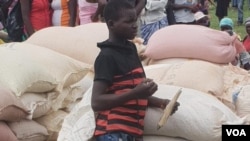
The food crisis in Zimbabwe is worsening with the World Food Programme saying it urgently needs $200 million to feed more than four million people on the brink of starvation.
World Food Programme (WFP) regional director for Southern Africa Gerald says the situation is desperate in the country due to a devastating drought and an economic meltdown.
WFP says nearly eight million people are in need of food assistance in a country, once dubbed the regional breadbasket.
A recent report compiled by the United Nations International Children’s Emergency Fund (UNICEF) and the Zimbabwe National Statistics Agency concluded that poverty has reached unprecedented levels with more than 76 percent of children in rural areas having slid into poverty.
Zimbabwe’s Agriculture Minister said recently that the country is left with 100,000 tonnes of maize, expected to last only one month at a time millions of people are food insecure. Zimbabweans consume almost 800,000 metric tonnes of maize a year.
WFP Sees $200 Million Gap as Food Insecurity Rises in Zimbabwe
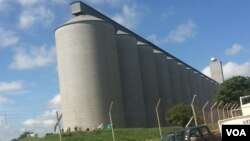
HARARE — The United Nations World Food Program says it is struggling to raise more than $200 million to ease food insecurity in Zimbabwe. Economic collapse and recurring droughts in the country — once the breadbasket of southern Africa — have left 5.5 million people without enough to eat.
Maria Gunzi, a 66-year-old widow, farms her land, but worries she will not have enough food to last until the next harvest.
"Hunger and poverty are real here, I do not even have fertilizer for the land I am preparing," she said. "All my crops were burnt by the sun last season and there is no food aid coming. These wild fruits are not getting buyers, people are broke. I wish the government would chip in with assistance, especially for us, the old. Hunger is giving me a real headache."
Gunzi is among the 5.5 million people in Zimbabwe who are food insecure until at least next April, because of the collapsed economy and recurring droughts, according to the World Food Program.
"For us, we look at the severity of the (economic) situation, and coupled with the fact that the forecast for the 2019/2020 agricultural season is also not good, it is almost similar to last year's forecast," said Eddie Rowe, director of World Food Program in Zimbabwe. "We reckon that we will be in for a long run."
WFP says it sometimes imports food from Zambia to aid Zimbabwe, but the drought-damaged Zambia has imposed a ban on corn exports.
"We are running against time. We need these commodities by January," Rowe said. "For us to implement this program at scale, reaching 4.1 million, from January up to April, and then 1.5 million May and June, it would cost us a total of $293 million. We have only received 30 percent of that. Meaning that we have a funding gap of $211 million."
The WFP official maintains hope that international donors will assist Zimbabwe, though he knows the country is competing for funds with emergency situations in war-torn places such as Yemen, Sudan and Somalia.
But any aid would be a relief to Maria Gunzi, who says climate change has affected her, as she used to be able to fend for herself.
Zimbabwe Says Grain Stocks Running Out As Severe Drought Grips Nation

HARARE (Reuters) - Zimbabwe has only 100,000 tonnes of grain in its strategic reserves, enough to last just over a month, as the southern African nation suffers the effects of a severe drought, according to the agriculture minister.
More than half the country’s population faces food shortages after maize harvests halved last year. The country has received little rain since the summer planting season started in November, and crops are wilting in some areas.
Agriculture minister Perrance Shiri told officials in Bulawayo, southwest Zimbabwe, on Wednesday that the government should help farmers cope with drought by building more irrigation infrastructure.
“As things stand at the current moment, we have less than 100,000 (metric tonnes) of grain in the strategic grain reserve and imports, especially of food, are ballooning,” he said in a speech seen by Reuters.
The grain reserve has capacity to hold 500,000 tonnes but it has been run down after a poor harvest. Zimbabwe consumes 80,000 tonnes of maize every month.
Finance Minister Mthuli Ncube has said Zimbabwe needs to import at least 800,000 tonnes of maize this year, mainly from Tanzania, South Africa and South America.
The country’s grain millers group says it has bought 100,000 tonnes of maize from South Africa and Brazil and expects the first consignment to arrive next week.
Shops are running out of subsidised maize meal while prices of basic goods soar. Zimbabwe is in the midst of its worst economic crisis in a decade, dashing hopes for a quick recovery under President Emmerson Mnangagwa’s government.
The United Nations World Food Programme needs $200 million to feed 4.1 million Zimbabweans after saying the country faced another poor harvest this year because of sparse rains.
“We need to build the capacity of our farmers to be resilient to climate change shocks and stresses such as drought, floods, crop and livestock diseases, among others,” Shiri said.
Reporting by MacDonald Dzirutwe; Editing by Katya Golubkova







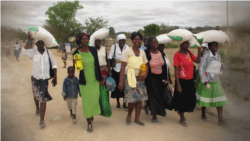
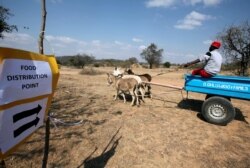

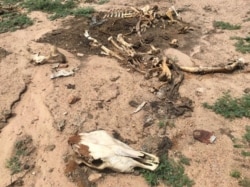
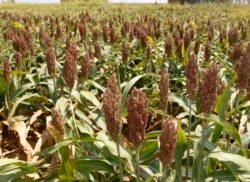
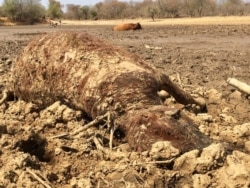
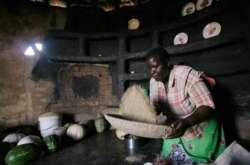
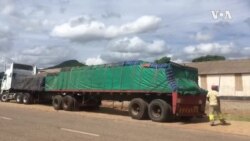


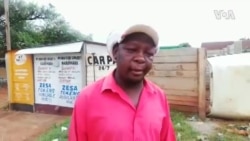
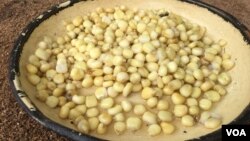
Forum